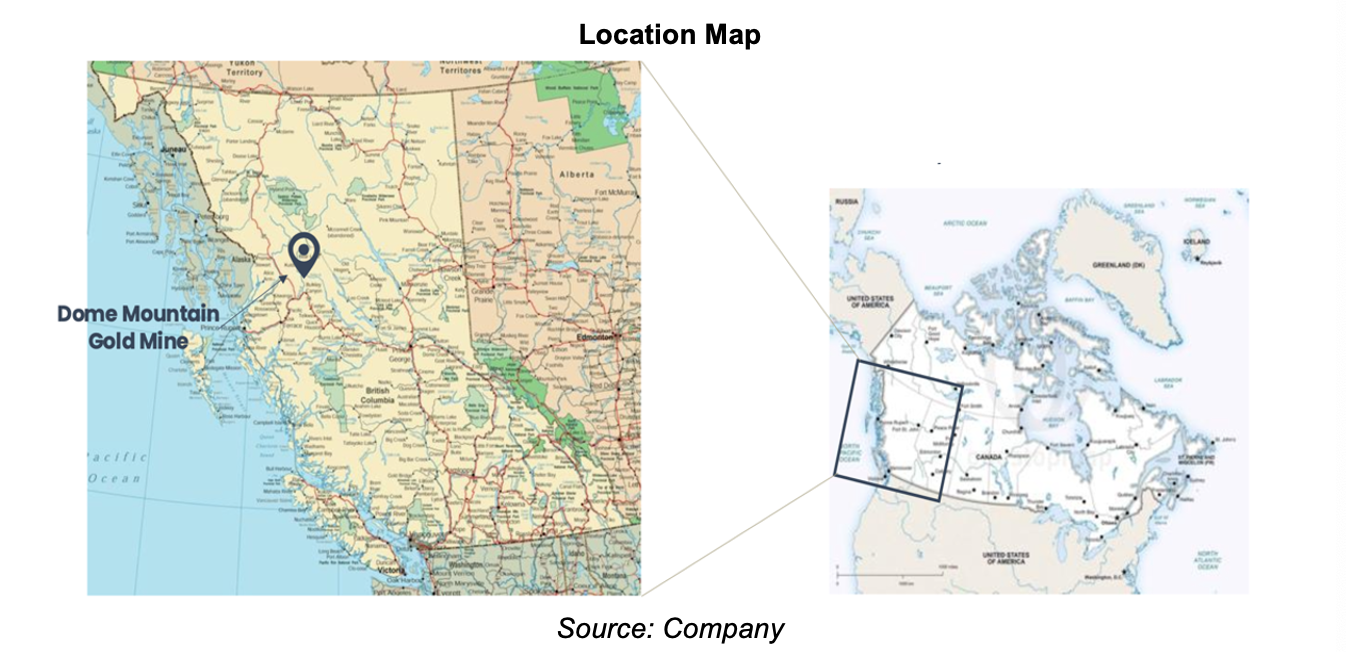
We attended the official reopening of the Dome Mountain gold-silver mine on July 9, 2025. Our Head of Research conducted a two-day site visit, where he had the opportunity to meet with management, local stakeholders, Lake Babine First Nation representatives, and key contractors overseeing logistics and operations. The visit also included a tour of the underground mine, and a high-capacity water treatment plant, built to handle six times current usage.
The trip began with a 1.5-hour flight from Vancouver to Smithers, a small resource-driven town in northwest B.C., known for mining, tourism, and steelhead fishing. Weather conditions were mild with intermittent rain. Upon arrival, our group—consisting of approximately 30 individuals, including analysts, investors, media, and members of the BLLG team—traveled about 50 minutes by road to reach the mine site. Although slightly bumpy in parts, the road was in good condition, which is important given its intended use for long-haul ore trucking to Nicola Mining’s (TSXV: NIM) mill.
Mine Portal Entrance
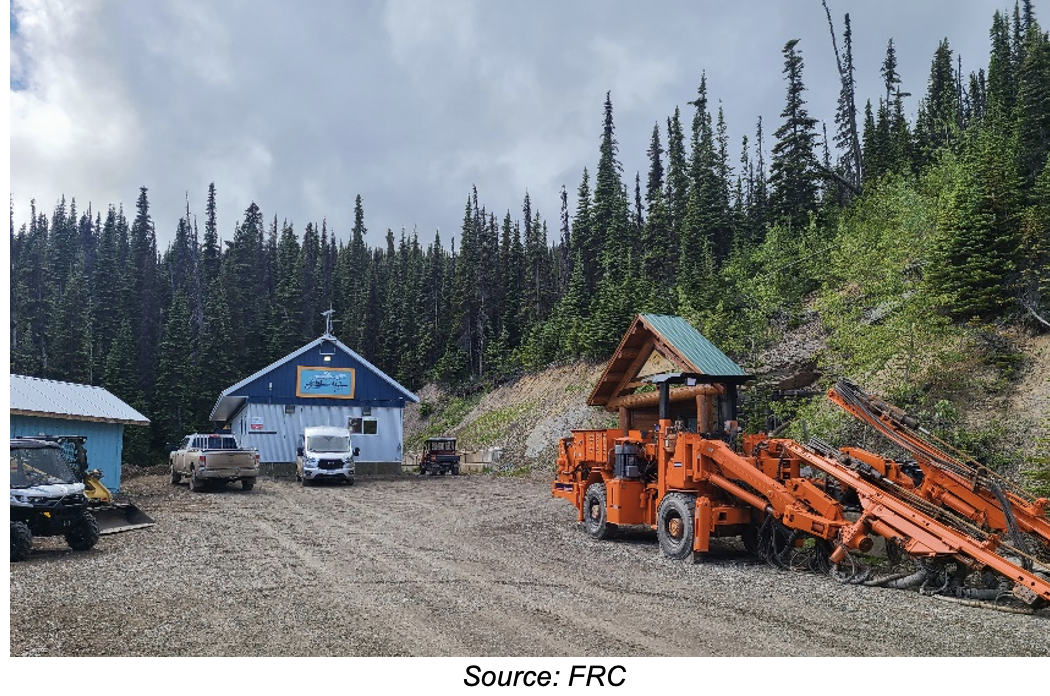
We entered the underground workings through the 1290 portal, pictured below.
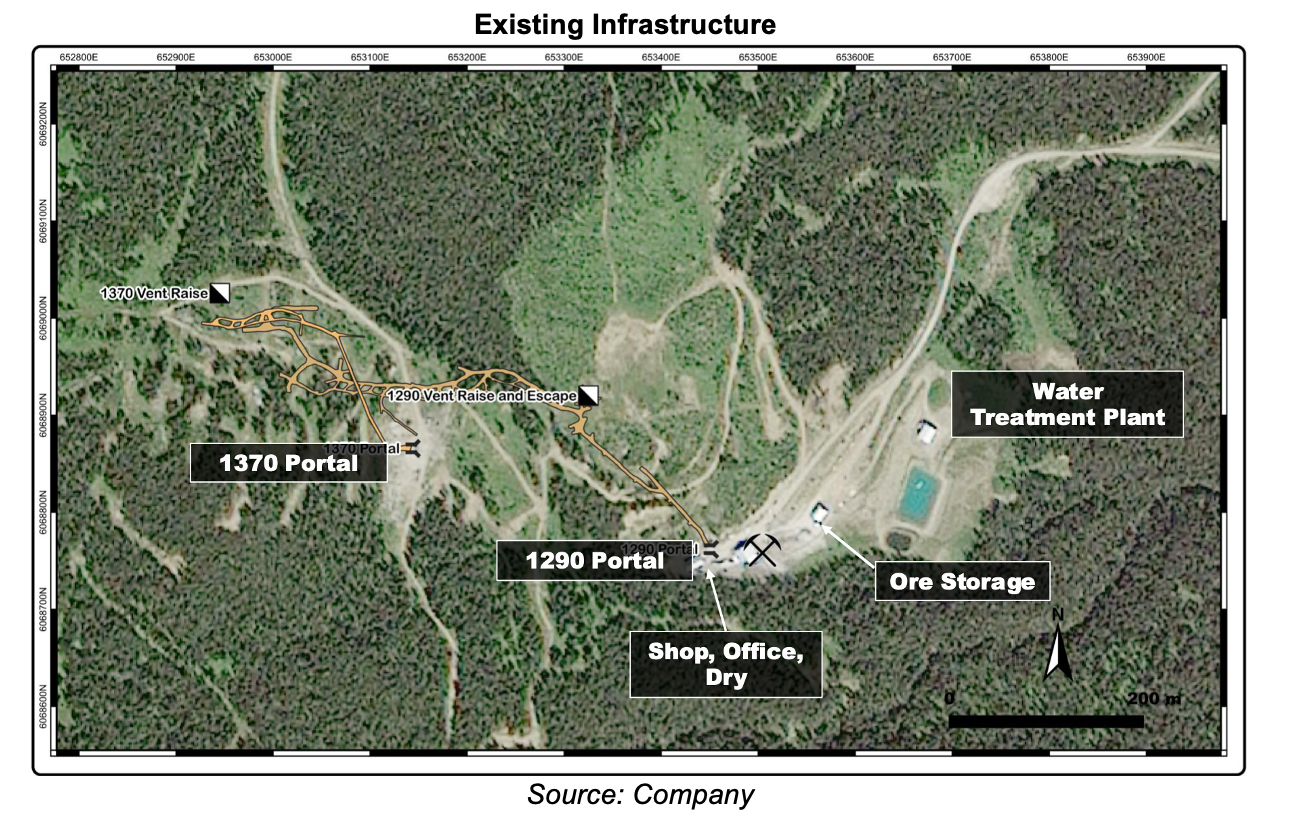
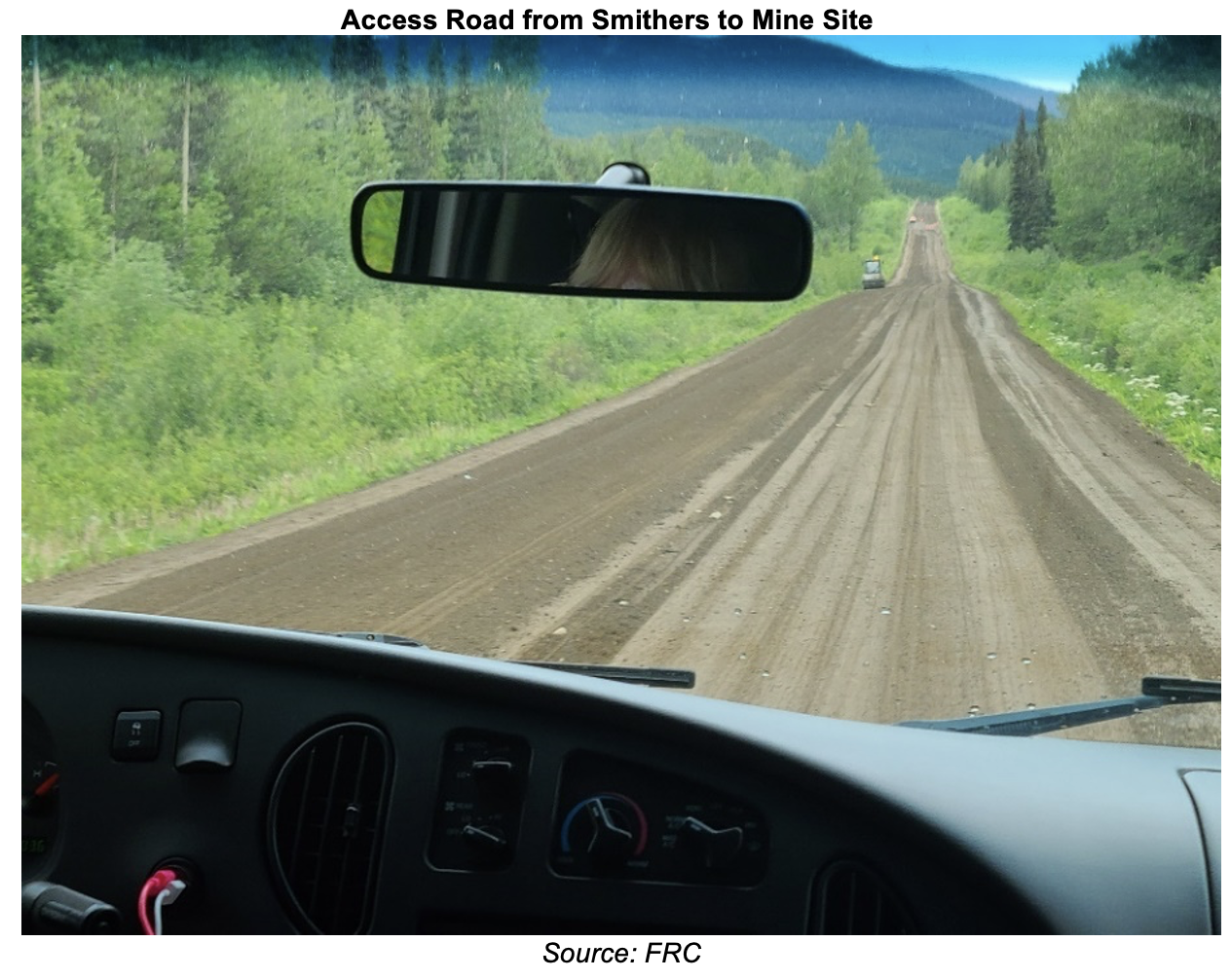
On July 8, we conducted a one-hour underground tour of the mine. The site was well-maintained, and offered good access throughout. We were able to walk through a significant portion of the defined resource, which currently totals 234 Koz of gold, and 1.2 Moz of silver. Mineralization is hosted in high-grade quartz veins, primarily concentrated in the Boulder vein. This zone extends roughly 530 m along strike, and 200 m in depth. We also viewed the Argillite vein, one of 15 known veins on the property, though only six have been drill-tested. Notably, over 90% of the land package remains unexplored, offering substantial upside potential. The current resource estimate does not include drilling from the 2022 to 2023 infill drill campaigns. Several of these holes intersected the Boulder and Argillite veins.
Underground Mine
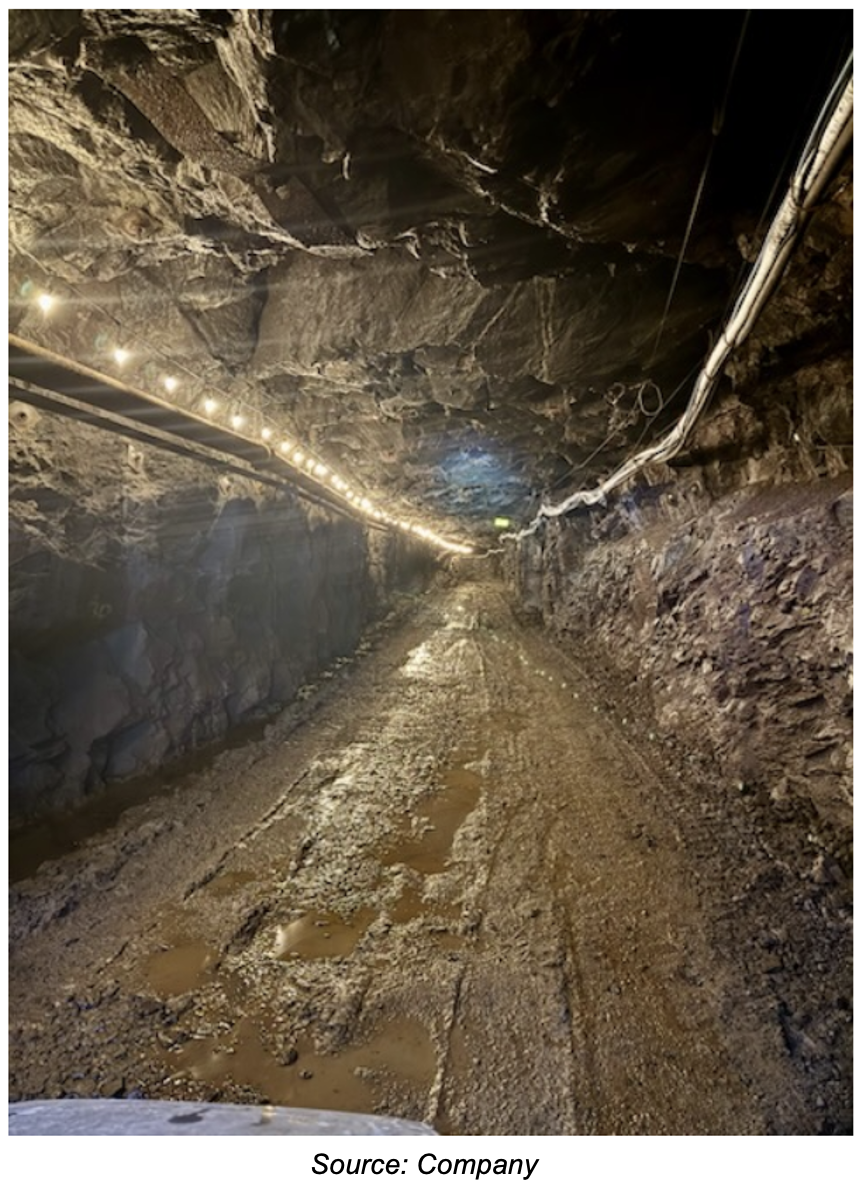
Underground Mine
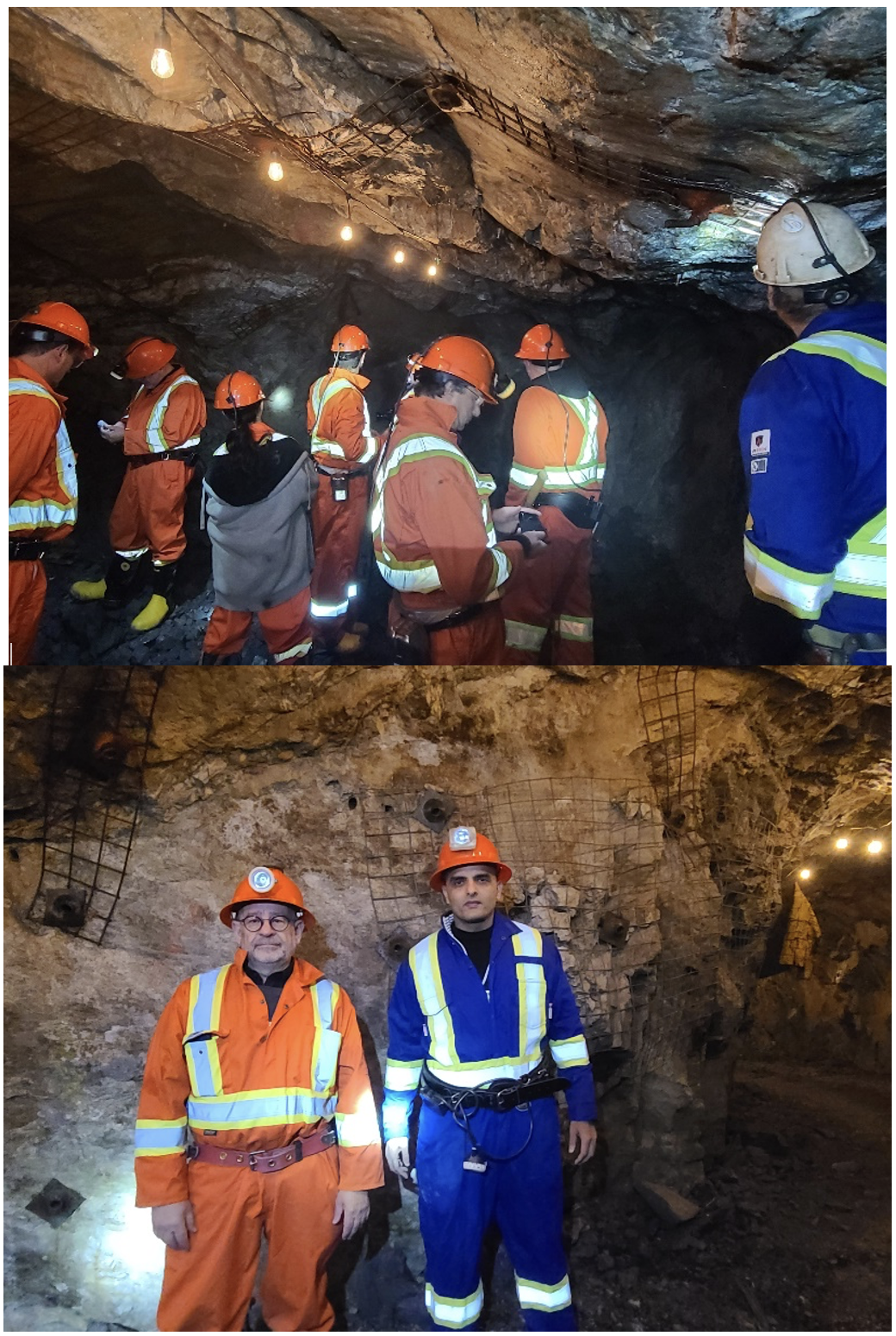
Sid Rajeev (FRC Head of Research) and Yannis Tsitos (Chair, BLLG Mining Committee)
Source: FRC
The next day, we attended the mine’s official reopening ceremony, which included local community members, representatives from the Lake Babine Nation, employees, and contractors—about 100 people in total. The event demonstrated strong community engagement and local support, particularly from the Lake Babine First Nation, which we view as a key advantage. Local support is critical to mining projects worldwide, and this endorsement greatly enhances the project’s community approval
Official Reopening Ceremony
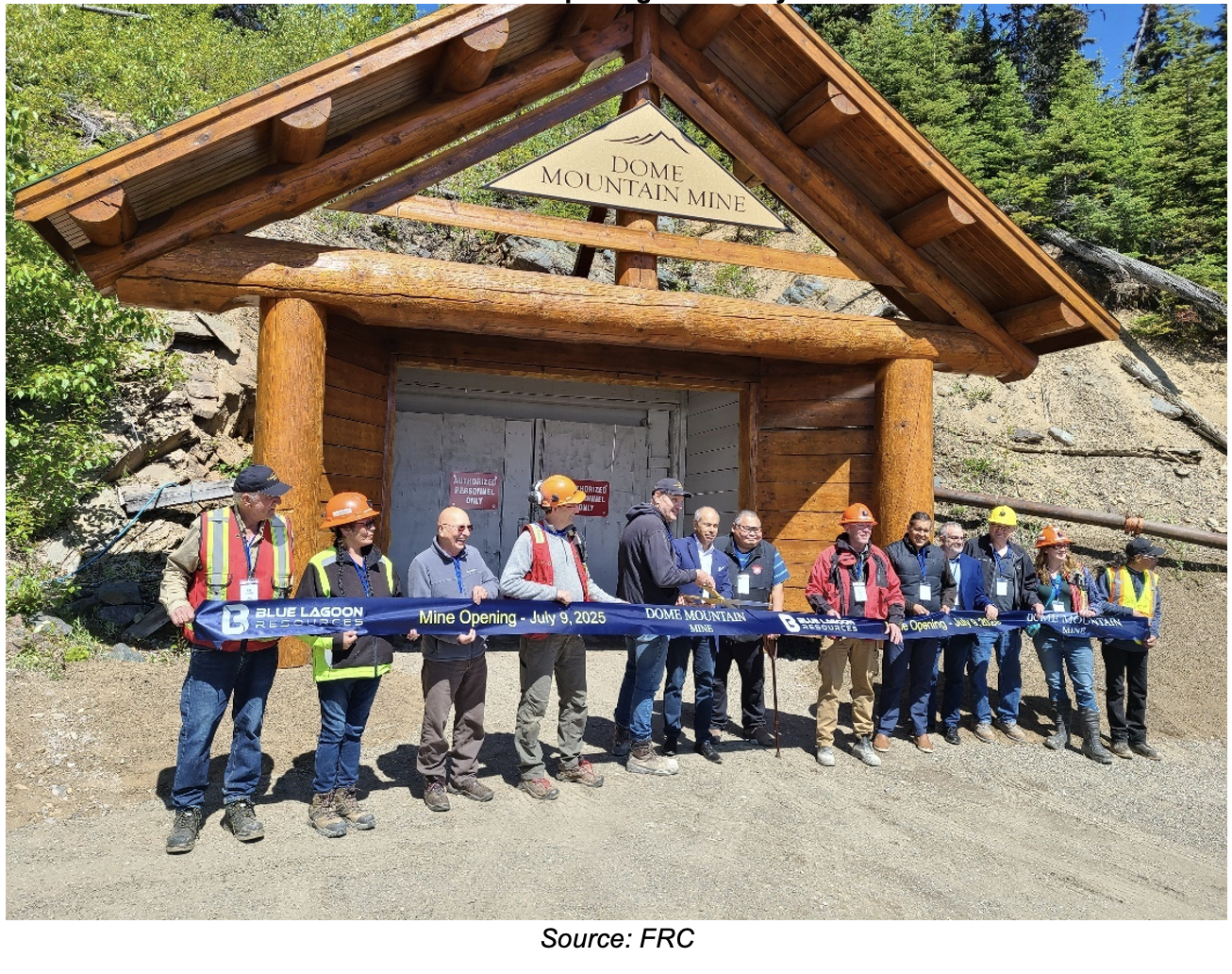
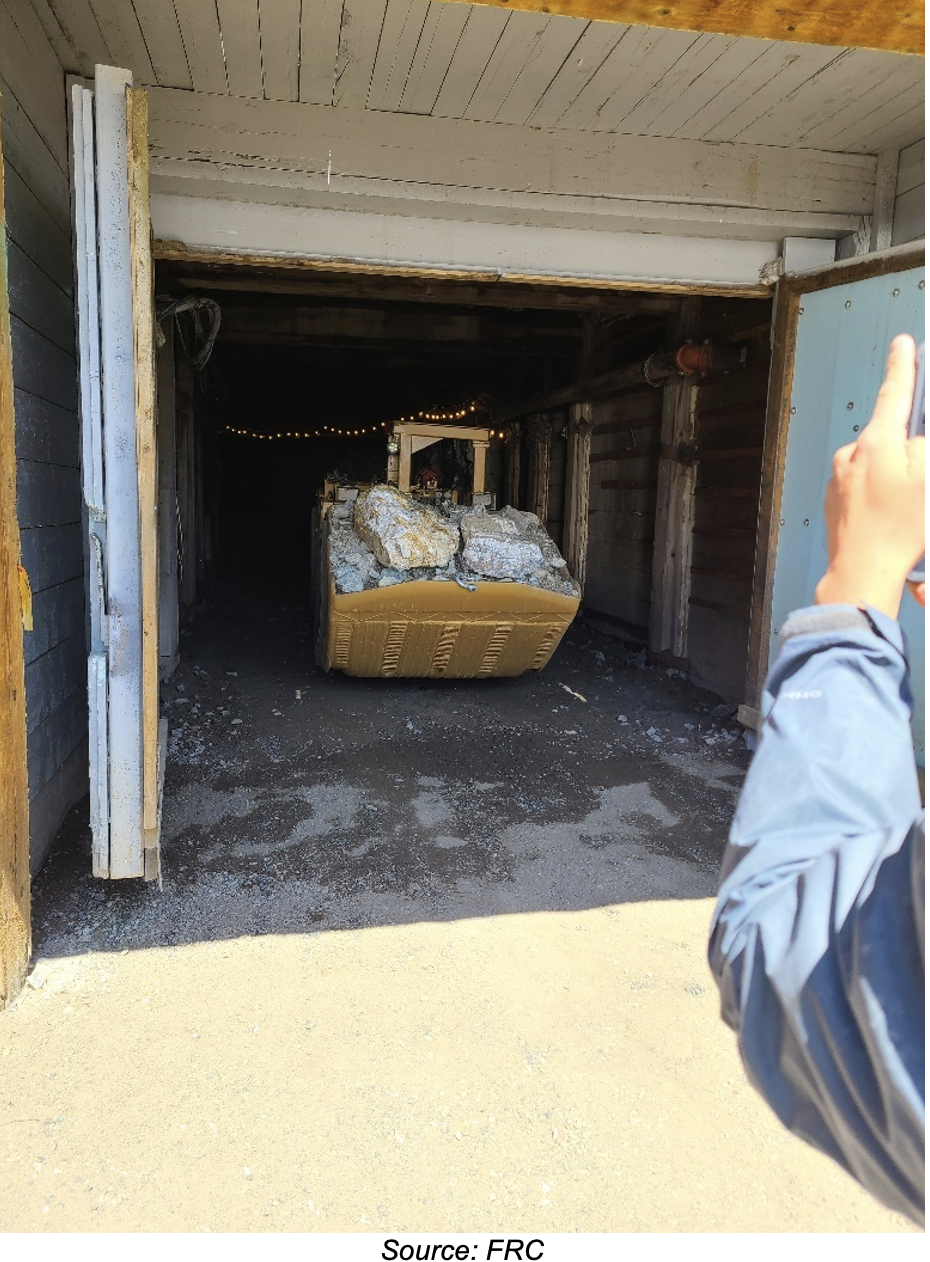
We also had the opportunity to speak with the trucking contractor responsible for transporting ore to Nicola’s mill near Merritt, B.C. Although the mill is approximately 900 km from Dome Mountain, a distance that would typically make toll milling cost-prohibitive, we believe this model is feasible given the project's modest daily throughput (100–150 tpd), and high-grade material (9 g/t). According to the trucking company’s CEO, each truck will haul 30–40 tonnes per trip, translating to approximately 10 oz of gold. He estimated the cost per trip at around US$3,500, translating to roughly US$350/oz. Combined with other operating expenses, we estimate total cash costs at US$1,300/oz, implying a strong margin of over US$2,000/oz at current gold prices.
Another key takeaway was the strong alignment between BLLG and Nicola Mining. Nicola’s CEO, Peter Espig, attended the reopening event, and expressed full support for the partnership. Nicola holds an equity interest in BLLG, further aligning incentives and reducing risk around toll milling capacity. As noted in our initiation report, BLLG has a profit-sharing toll milling agreement with Nicola for up to 75,000 tonnes per year (200 tpd).
Management’s plan is to process 55,000 tonnes in year one, targeting 15 Koz of gold, and ramp up to 75,000 tonnes (or 20 Koz oz) in year two. Our models assume a gradual throughput increase from 100 tpd in year one, to 200 tpd by year four. At current gold prices, we estimate BLLG could generate US$21 million in net cash flow in the first year alone.
This site visit was a valuable reminder of the importance of on-the-ground due diligence. In the post-COVID era, physical site visits have become less frequent, but this trip reinforced the insights one can only gain through firsthand observation and face-to-face interactions. Meeting with management, staff, local communities, and contractors, allowed us to build stronger conviction in our analysis, and sometimes identify red flags not visible in financial models or marketing materials.
Overall, we came away more confident in our recommendation and valuation of the Dome Mountain project. BLLG has cleared a major milestone by restarting operations. Looking ahead, the main challenges will be execution, production ramp-up, and cost control. While we acknowledge these variables, having seen the operation and met with management and key contractors, we remain cautiously optimistic about BLLG’s ability to deliver.
Please refer to our initiation report for a detailed valuation and our fair value estimate.
Risks
We believe the company is exposed to the following key risks (not exhaustive):
- The value of the company is dependent on gold prices
- Advancing Dome Mountain to production without a feasibility study
- Exploration and development
- Need to secure permit upgrades to expand mine capacity
- Production ramp-up depends on the availability of milling capacity or tolling options












